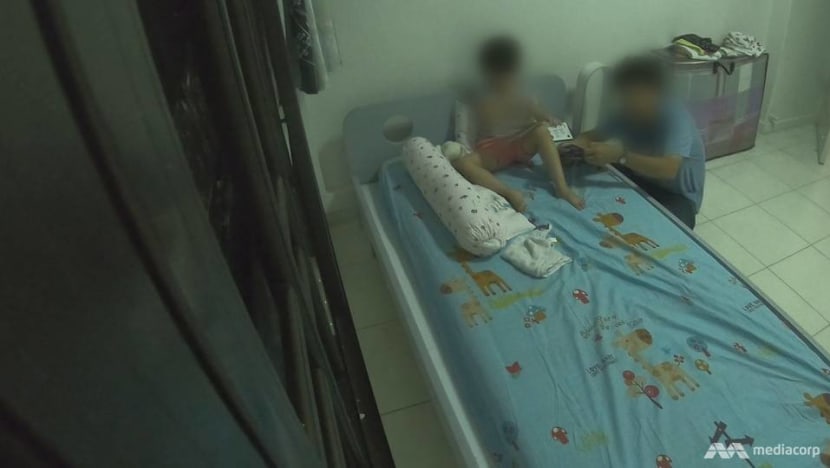'People might think we might be playing God': Inside the Child Protective Service
These social workers face hostility from parents and backlash against their decisions — all to safeguard children who are abused or neglected. CNA gains unfiltered access to their real-life cases.
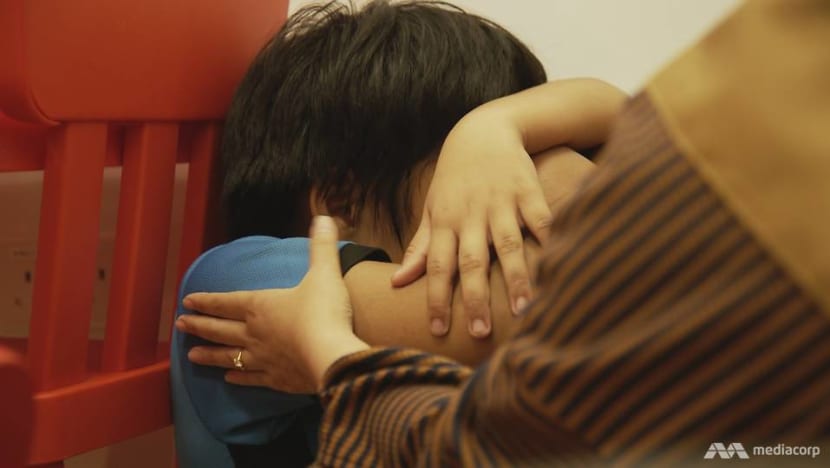
A child protection officer comforts an 11-year-old boy after he was separated from his father.
SINGAPORE: It started with her parents always arguing at home. The father remembers her mother throwing things — even breaking a fan — once she lost her temper.
But the couple’s arguments got more heated than that.
“She’d carry my daughter to the window and threaten to throw my daughter down. I always ran over to hold her hands and say, ‘You can’t do that,’” said the man, who also recounted how she “wanted to stab me”.
Their daughter was taken away by the Ministry of Social and Family Development’s (MSF) Child Protective Service (CPS).
The four-year-old is now in foster care. Her parents had already finalised their divorce when child protection officer Hon An Chi took over the case last year. But the work has only just begun for the CPS.
The mother, a Vietnamese, has not given up hope of caring for her daughter again. That is a risk Hon is having to manage, mindful that “every decision I make may have a direct impact on the child’s life”.
“People often think that our job is to simply remove children and break up families,” said the officer.
“But the big part of our job is to also support the families so that they can keep the child safe, and at the same time we want to rebuild the relationships between parents and the child.”
That is a reason CPS cases “are quite complex”, underlining the delicate work of officers like her.
What people do not often see — hostility of parents, scrutiny of every unpopular decision and the emotional weight of witnessing neglect and abuse inflicted on minors — is now featured in the series Inside the Child Protective Service.
Because for the first time, and over four months, CNA followed this team of social workers whose job is to protect Singapore’s children. (Watch the three-part series here.)

‘A HEAVY RESPONSIBILITY’
Their work, in their words, is to talk to children when they may be unsafe at home to find out what has happened to them, and find ways to ensure that they do not need to feel confused or scared.
“Our core work is to ensure that children are not harmed. We want to ensure that every child grows up in a safe and loving environment,” said CPS director Jai Prakash Ramalingam.
“We have a heavy responsibility to be the voice for the children.”
That responsibility, governed by the Children and Young Persons Act, has increased over the years. The CPS investigates almost 100 cases a month, compared with the 343 cases it handled in all of 2013.
READ: As child abuse reports rise, Singapore agencies shore up protection efforts
A new officer like Hon, who joined last year, undergoes training for up to a year. When she was six months into the job, she was already working on about 40 to 50 cases.
And one of the first few cases assigned to her was the daughter in danger. Fortunately, the father has a good relationship with the girl, who can stay over at his home on Saturdays if the mother is not present.
The mother’s contact sessions with the girl, however, were at the MSF for two hours a week, and Hon had to be around to observe them.
“But I may not necessarily step in because we also want to see how the mother is able to handle the child,” she said.
In this case, the child displayed unwillingness to interact with the mother in the initial stages, but Hon was hopeful the relationship would improve “because the mother’s trying”.
While more time was needed, the thing about working to reunite children with their parents is that “time isn’t on our side”, said CPS deputy director Fayane Tan.
“As the children grow older, it’s more difficult for (them) to return home.”
So, for the mother not to delay her progress towards outings with her daughter outside the MSF, which means more time to spend together, what was needed was a “safe person” to help supervise their interactions.
A safe person is an adult placed to prevent children from being exposed to further harm. And the CPS must assess the person’s suitability to assist in the care of the child.
What happens, however, if the person has a criminal record — for rioting and drug abuse in his younger days and for helping to “bring some girls in from overseas” 10 years ago, which landed him in jail for three years?
That was a concern when the mother proposed her new husband as a safe person, although he professed that he was “a changed person”.
The CPS has the ability to restrict the stepfather’s access to the child. But after a team consultation, the decision was to facilitate access and observe their interactions first.
“Because the stepfather is already part of the mother's life. And if the child is to return to the mother’s care, he’ll also be a part of the child’s life,” said Hon.
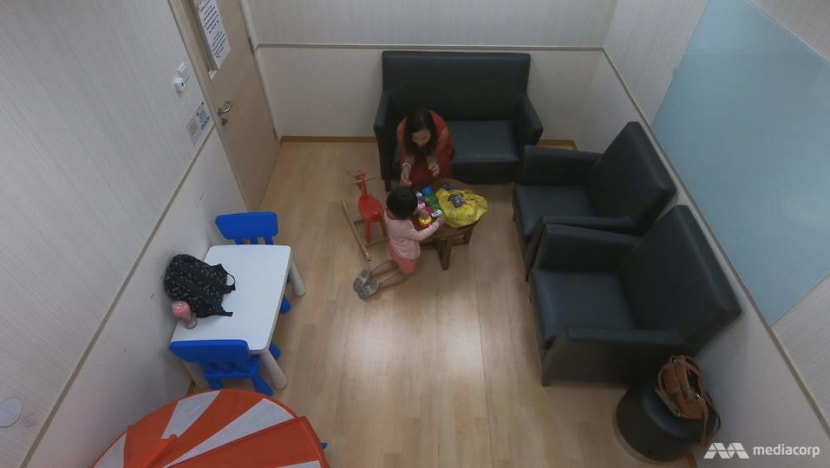
TO REMOVE A CHILD OR NOT
For each case, there are “hard decisions” to make. “People might think that we might be playing God,” Tan acknowledged. And the first decision is whether to remove a child from the parents’ care.
This was a call that child protection officer Maisurah Afiah Amin had to make for a two-year-old boy after the parents had a domestic altercation in front of his pre-school.
He was removed directly from the school, which provoked “a lot of anger” from the parents and paternal grandparents, acknowledged the officer. The father was so angry, in fact, that he caused a commotion at the CPS office.
But it was not the first time the boy had been exposed to family violence.
When the case was first referred to the CPS, its officers found that there was “chronic spousal violence”, especially during the wife’s second pregnancy, related Maisurah. So the second child, a one-year-old girl, was removed at birth.
With yet another incident, the brother joined his sister in the foster care system. “These were very real worries about the child’s safety that as a child protection officer, I couldn’t ignore,” said Maisurah.
We were especially concerned because not only was violence occurring very frequently, but the mother of the children was reported to have suffered a lot of injuries as well.
That is also why, with the mother pregnant again, the CPS had to consider whether the couple’s third child would need to be removed at birth.
“The baby, being a very vulnerable child, (would be) at risk of being indirectly or directly harmed whenever the parents have physical fights,” said CPS assistant manager Nurul Nadiah Mohamed Noor.
Reported incidents before their son was taken away showed that the father had already “involved the child in their conflictual relationship”, noted Maisurah.
For example, there was a public altercation between the father and the mother together with her family — while he was carrying the boy. The police had to intervene.
There was also a video taken by the father that showed him teaching the child to curse and “reject the mother”, cited Maisurah.
Yet, placing their newborn in alternative care was the last resort for the CPS. “We want ... family members who can come in to help out because that’s the most effective way,” Nadiah told the parents during their case plan discussion.
The problem was the couple were proposing that the father’s parents play the important role of safe persons, when the CPS had tried this before and assessed that the paternal grandparents could not be suitable any further.
These are the kinds of high-risk cases that the CPS’ intervention team must manage over a period of time, like a year or two, or longer. They have a caseload of about 1,200 children.
“We’re the team who takes on parents who are very challenging, unable or unwilling to work with us,” said Tan, who heads the team.
In the case of the angry father, it was only after his wife reconsidered the situation and persuaded him to accept foster care for the newborn that an agreement could be reached with the CPS.
The baby now joins his siblings in weekly contact sessions with the parents at the MSF.
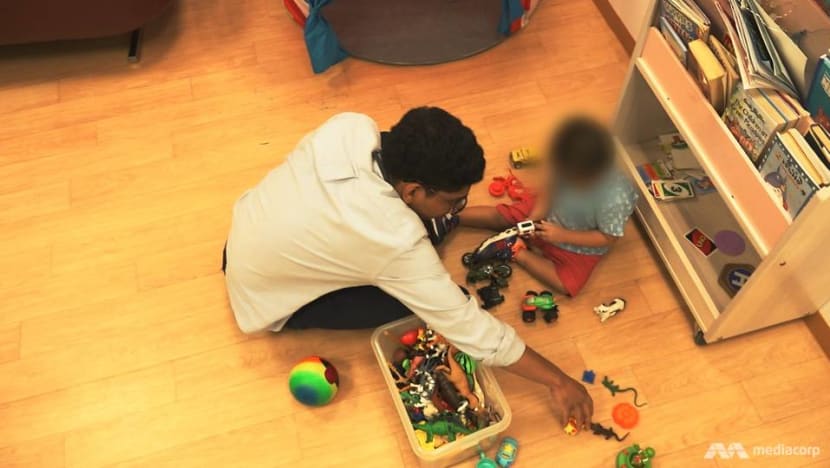
SCRUTINY OF THE COURT
These decisions that CPS officers make, such as whether to remove or return a child to the family, must stand up under the scrutiny of the Family Justice Courts.
And the courts do overrule the CPS’ assessments if, for example, there are no immediate safety concerns. That was the case with one family where there was suspected violence and drug use.
It was referred to the CPS by a hospital after the father presented himself as intoxicated or on drugs, with bloodshot eyes. There were also reports — from community agencies involved in the case — that the parents fight with each other.
The concern was that the three children, aged six years to four months, were being exposed to violence. In the CPS’ first interview with the two older children, they said they had seen the father hit the mother.
Notwithstanding the parenting capacity of the couple, the court did not find substantial evidence to rule that the children should be placed out of home, as recommended by the CPS.
“The court felt that the parents hadn’t committed any direct harm on the children,” said CPS assistant director of investigation Tang Hong Hong.
(But the judge) didn’t throw out the case. He’s satisfied that there are CP (child protection) concerns, and (we) need to investigate further.
The work of the investigation team is thus to understand a lot more about such families in the first instance, and especially to “see the impact of whatever they're doing on the child”, said senior child protection officer Tessa Tay.
But that is not always easy. In this family’s case, she said the CPS “didn't get much from the children” after a second interview. Meanwhile, the father admitted only that he has “pushed” the mother before.
Still, the CPS can impose a set of rules — a safety plan — that parents must sign in agreement before their children can return home.
For this family, that meant no physical punishment of the children, no blaming them for the CPS’ involvement, as well as allowing its officers and those of other agencies to make announced or unannounced home visits.
“On top of that ... it’s important that we increase the visibility of the children in the community, so that’s why they have to go school every day, Monday to Friday,” Tay told the parents.
Non-attendance is not only a breach of the plan, but also calls for the CPS to go “to the house, to the school, anywhere, just to find out where the child is and whether the child is safe”, said Jai Prakash.
That was what happened when the two older children missed school on four out of the 12 days that followed.
Tang’s home visit, however, caused the mother to blow up because she needed the father to step up while she took care of their baby. And that was where the officer had to turn her focus.
In the end, Tang recommended that the CPS continue monitoring the family for six months. “The judge also agreed that a period of monitoring is necessary, not to guard the family but to provide support,” she said.
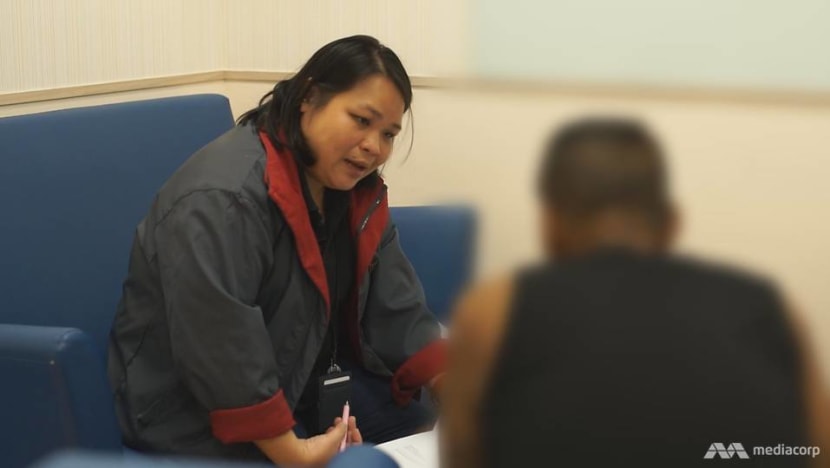
STRESSES OF THE JOB
As a mother of four, Tang can understand the perspective of parents like the one who shouted at her.
“Caregiver stress is very real. We face our children 24/7. So without support ... it’s very hard for someone to care for children alone,” she said.
The job of a child protection officer is also “highly stressful”, pointed out Jai Prakash.
Very few parents would agree with what the child protection officers are doing.
One of the contentious issues is caning. On this, he said: “In situations of discipline, I’d say a child is able to understand why a parent was harsh. When it’s abuse, it’s where discipline leads to serious injuries.”
This was one such case that child protection officer Muhamad Mubarak Mohamed Johari had to investigate when a school counsellor found cane marks on an eight-year-old boy — “on the right side of his face, 5 cm by 2 cm”.
It was inflicted by the boy’s paternal aunt. She had been caring for him and his twin sister for two weeks and was getting complaints from the school about the boy misbehaving.
Then when he cut up his mathematics textbook, “she couldn’t control herself”. “She said it was in the heat of (the moment),” related Mubarak. “She just continued caning.”
The father, a widower, had left his children with their aunt because of a heart condition. He has been declared unfit to work for a year, and his medications cause him to sleep for more than 12 hours a day.
So the CPS decided to explore the safe adult option: The children’s paternal grandfather. Getting him to live with the family, however, was not the difficult part for Mubarak.
The officer had to wait to do the interview, and until the CPS could assess that the grandfather can step in, the twins had to be placed in a children’s home, apart from each other because of lack of space.
They could not stomach living separately, and it showed. “When a child cries, obviously it affects me ... I’m also human, and it’s hard,” said Mubarak. “I really tried my best to ensure that they were in the same home.”
The child protection officers have seen how sad children can be when a parent leaves. They have seen children neglected because of drugs. They have seen parents’ mental health issues compromise children’s safety. And there are times they get angry.
“Whenever there’s abuse or neglect, I always ask myself, 'why do you (parents) have children?” said child protection officer Atiqah Habsah Ashik.
And because they are worried about the children, there are cases that give them “nightmares”, said Tay. “At any point in time, a parent can escalate that one action,” she added. “I’m definitely fearful of a child dying.”
Every two weeks, officers are encouraged to share their problems at check-in sessions. They could be feeling stuck, tired or confused, for example. But they keep going.
“What keeps me in this job is basically I think it’s a form of responsibility,” said Mubarak. “A child can’t possibly go home feeling scared every single day.”
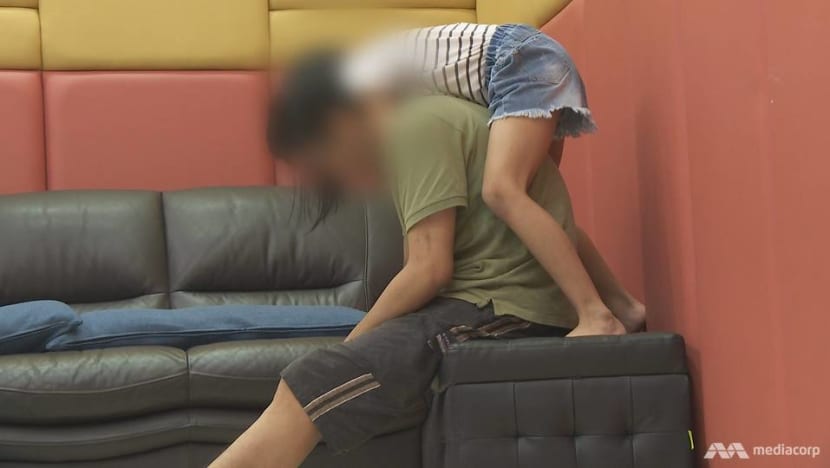
WORKING WITH CHILDREN
There are also long-term implications if a child remains in an unsafe environment, pointed out senior child protection officer Sakshi Dovedy.
“As a child grows older, the child would continue to engage in such behaviours to resolve any conflicts,” she said. “It’ll continue to impact him through his different stages of life and his relationships with others”.
In one case, she observed a four-year-old already demonstrate certain signals of that.
“It could be through him being louder, or him throwing things at his brothers, or being upset to the point where he’s screaming and being quite difficult to calm down,” she said.
“It isn’t very common for (four-year-olds) to attack other people or want to hurt them. It could be that he’s witnessed certain things that’ve been traumatic.”
When child protection officer Wong Wei Jin asked him where he learned to hit people, the boy and his older brother said “Mummy and Daddy”, who had fights at home.
“That was a bit surprising because, usually, children won’t be so able to clearly state such a thing,” added Wong.
In cases of parents who are unable and unwilling to change, the CPS will “shift its focus” to building up the child’s resilience, said Tan.
The agency’s Practice Enhancement Team works with the children to help them adjust to life changes and heal from trauma.
For the four-year-old the CPS is supporting, Dovedy thinks it is “promising” that the boy can remember certain emotional regulation tools that were introduced to him. And his “frequency of using physical aggression” has reduced.
This kind of positive change children get to experience in a different environment may even help their parents.
"Parents don’t suddenly wake up one day and decide to be bad parents. Sometimes they're so stuck in their ways of doing things. So we have to show them a different side through their children,” said Tan.
This work the CPS does with children and the fact that even abusive parents can “really love their children” were among the things that struck CNA producers Tang Hui Huan and Sharifah Alshahab.
“It was interesting that (the officers) would also put in sessions to help these children make sense of their lives. That’s something we didn’t think was part of their job,” said series producer Tang.
She added that the CPS realises “it can’t just be a small group of child protection officers looking out for these vulnerable children”, as the public, from schoolteachers to neighbours, “can keep their eyes and ears open”.
“It doesn’t mean that a child has to be hurt for you to call the hotline to alert the CPS. It could be emotional abuse or you just realise that something doesn’t feel right,” she said.
Sharifah hopes that Singaporeans “can all appreciate the complexities of these cases, and maybe afford to be more understanding of realities that aren’t our own, and ultimately create an atmosphere for children to grow up safe”.
For the CPS’ part, Tan believes its success rate has been “quite encouraging”. She said: “More than half of these children are returned home and remain safe in their parents’ care when we close the case.”
Watch the series Inside the Child Protective Service here.
To report concerns over a child's safety, the public can dial the Child Protective Service Helpline (1800-777-0000).
